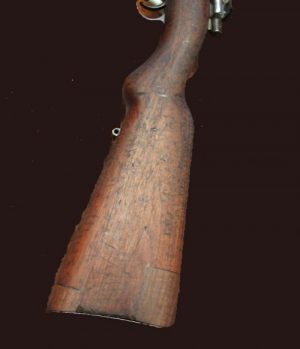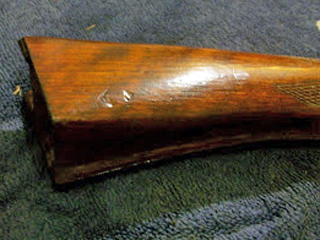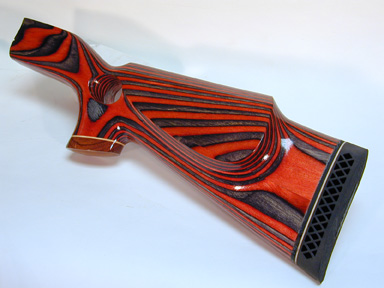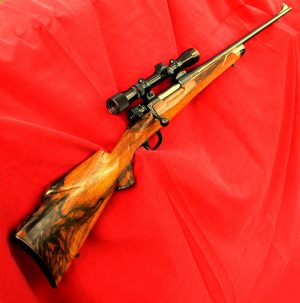
Changing, or darkening, the color of new wood — not previously finished — is accomplished readily by the use of water-soluble dyes. Some suppliers of these include:
- “Homestead Dry Dyes”, “Transtint Dye”, and “General Finishes” available at Rockler.com
- “JE Moser’s Aniline Dye” available at Woodworker.com
- “H. Behlan Dry Aniline Stain” available at vandykes.com
- “Color Tone Liquid Stain” available at stewmac.com
The wanted effect, at least the first time. is obtained by trial and error. If possible, the dye solution should be tried on scrap wood left from the subject stock or, next best, on wood closely resembling it. If nothing else is at hand, perhaps it can be tried on successive sections of a barrel groove, where it will be hidden later” on. Control of the amount of staining is possible by rinsing the stock under a running water tap after the dye is applied. This step will remove at least some of any excess stain and a light rinse should be made in any case. Then blot the stock with paper towel and set aside to dry. The stock should not be actually soaked in the dye, nor held under the tap so long as to cause needless saturation. The dye can be applied with either a clean paint brush or a swab of clean cloth fastened to a makeshift handle. The dye should be allowed to remain wet on the wood surface long enough for some penetration. End grain will dye darker than the rest of the stock. Some dye should be saved and diluted, for use in any checkering is added later. Only new wood, that has had no finishing material applied is suitable for dye application. Oil type stain is not as easily controlled as the water-soluble dye, but can be very successful, provided the color obtained is right and that the oil vehicle is a drying type that will not contaminate the LIN-SPEED oil applied later and slow its dry. The first application of the LIN-SPEED gunstock oil finish after the stain is in place will seal against unpleasant bleeding of the stain. An oil type stain is the only possibility for the color alteration of wood being refinished.
Varnish stains or any type stain that “seal” the wood should not be used because they will undesirably block the oil finish out of the wood.





